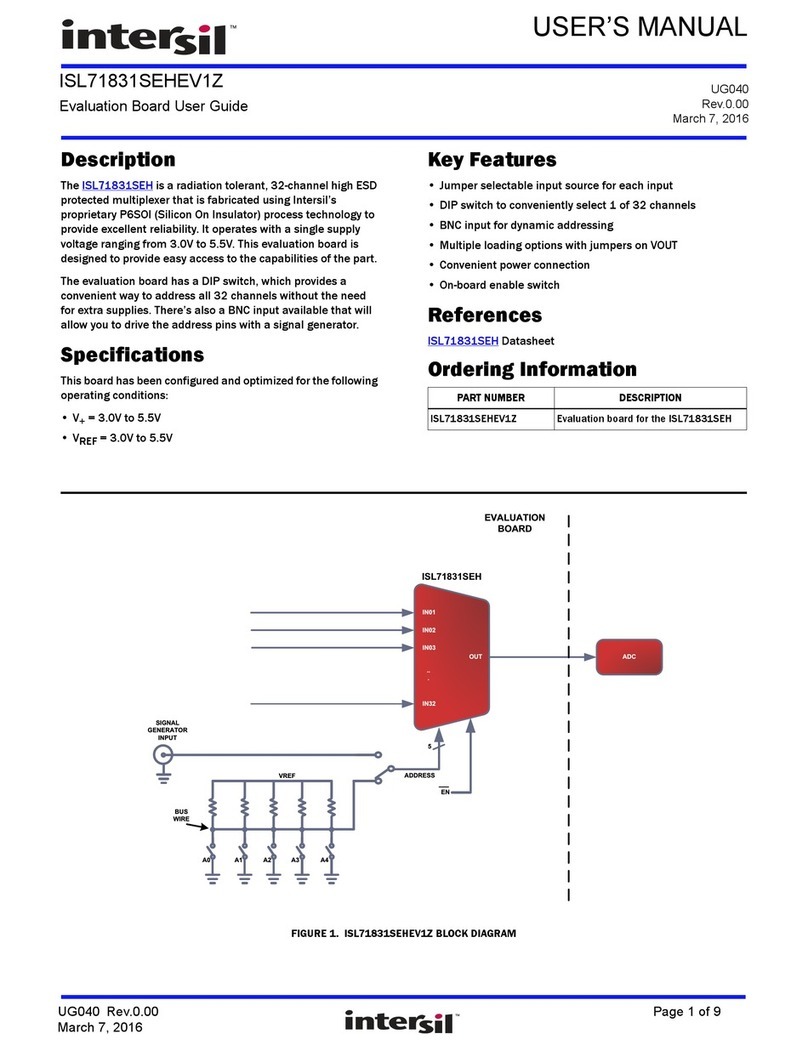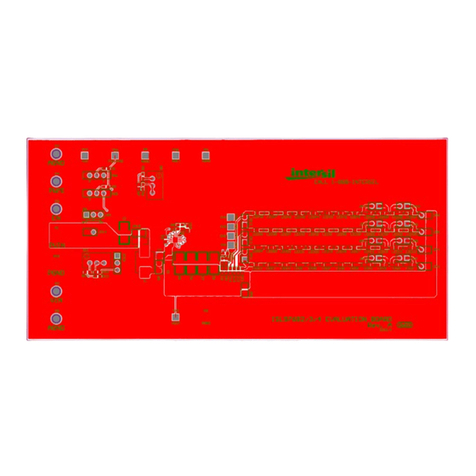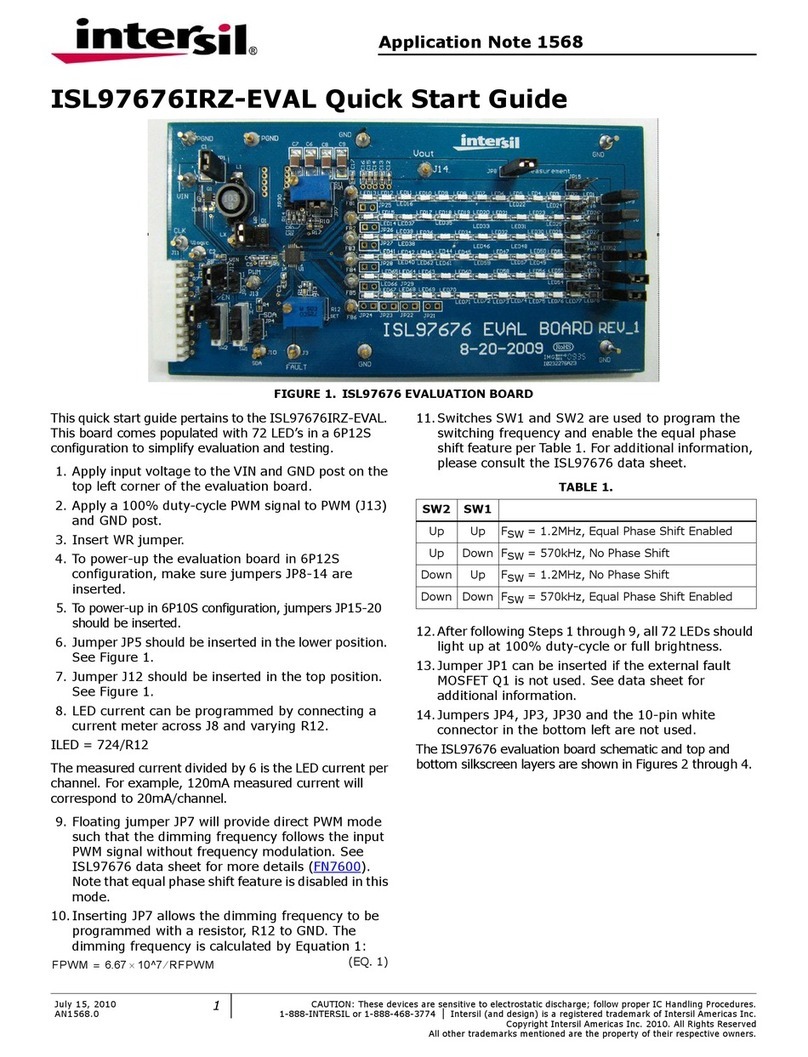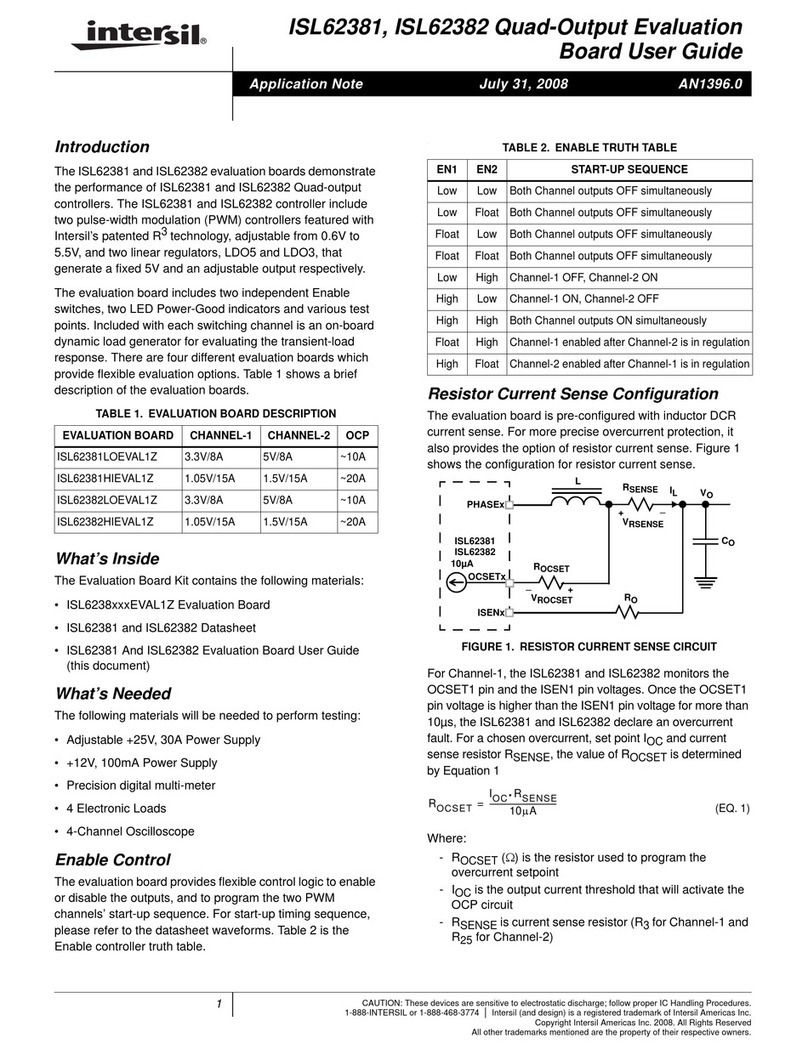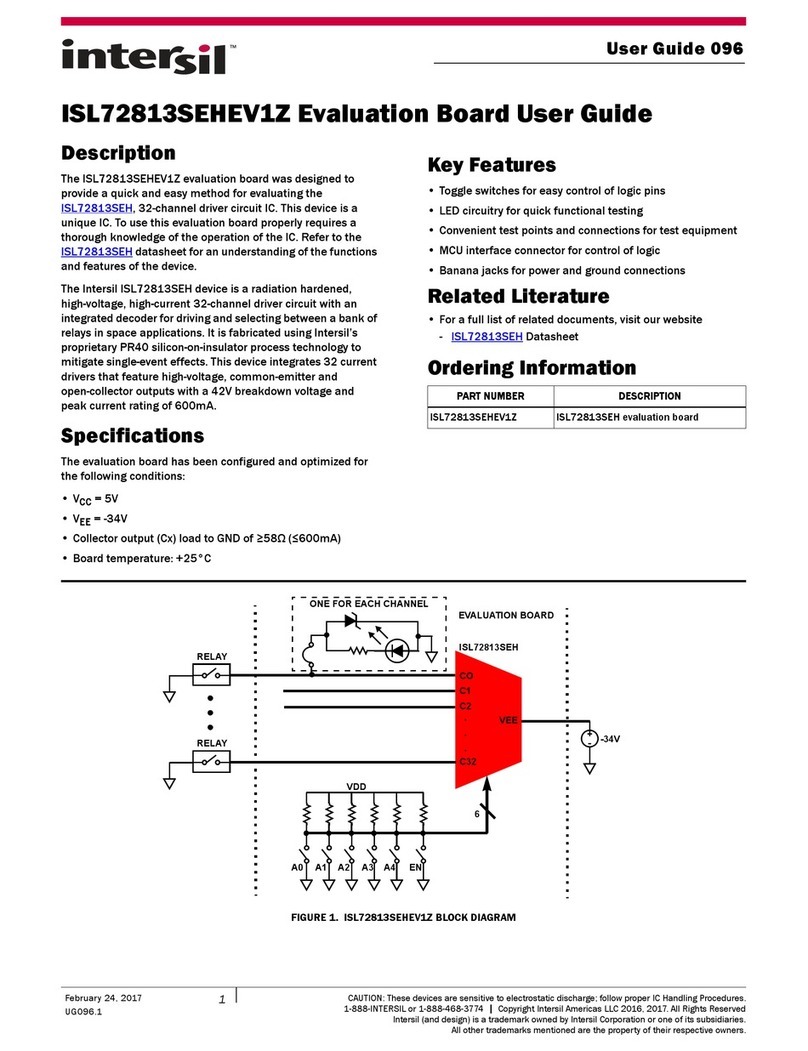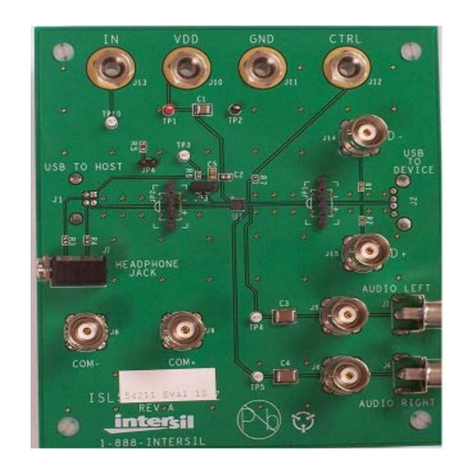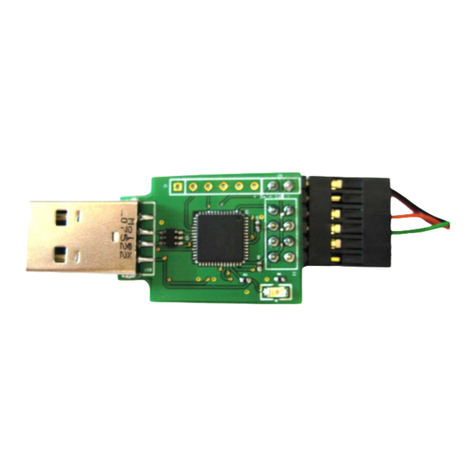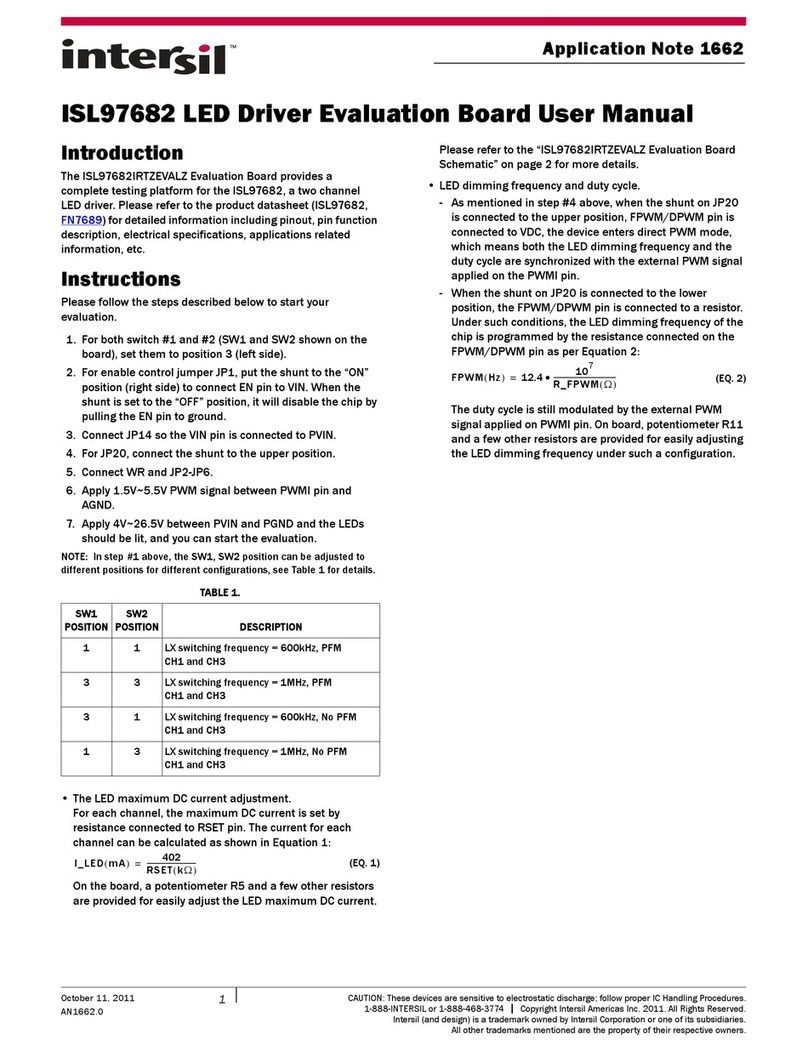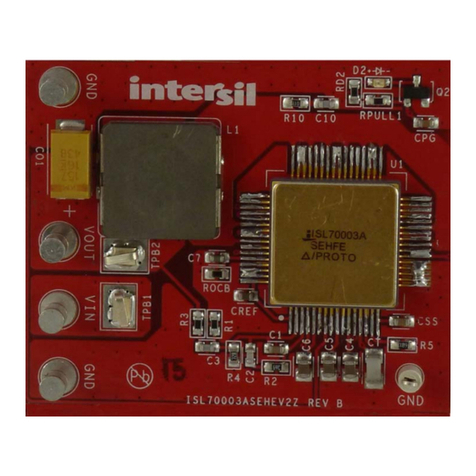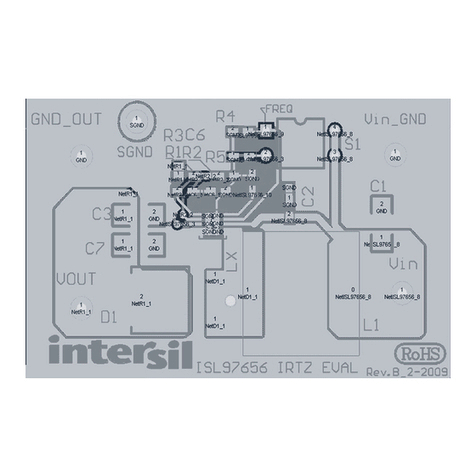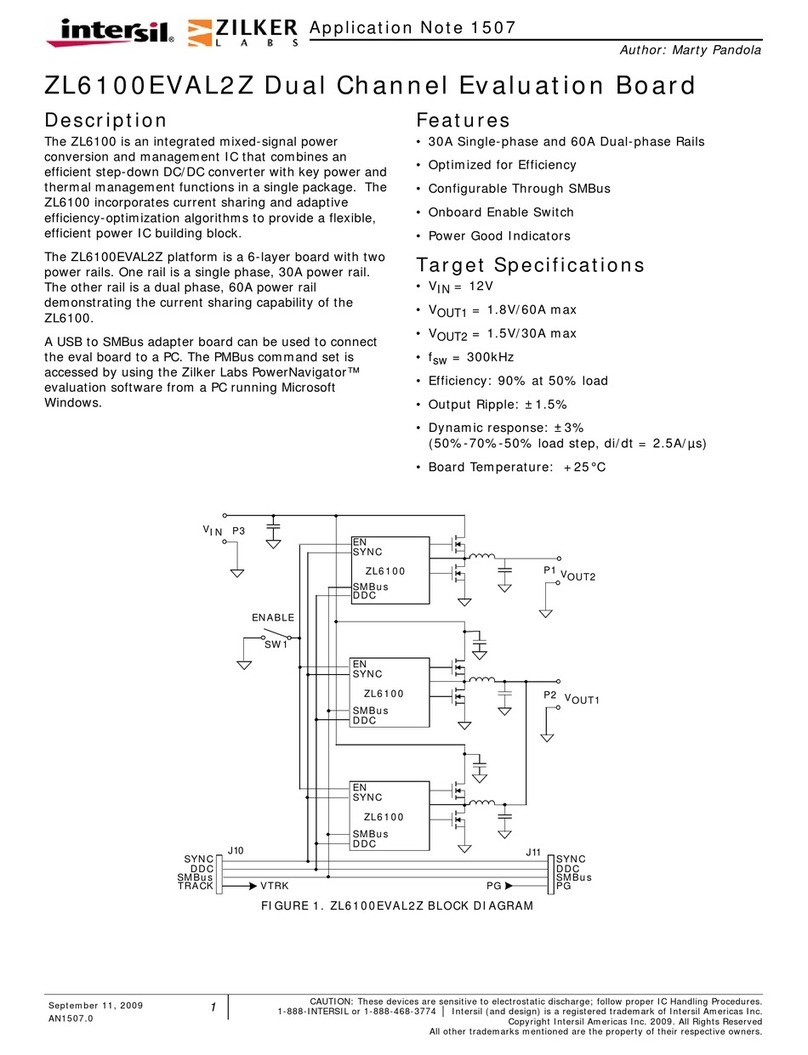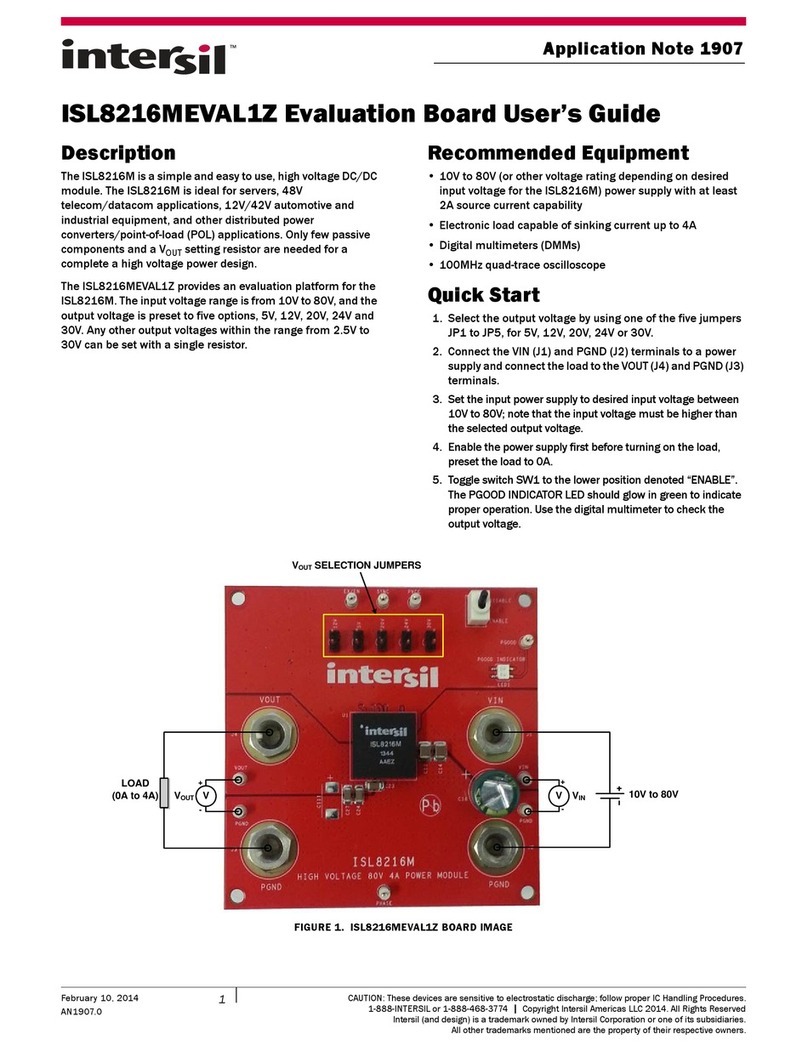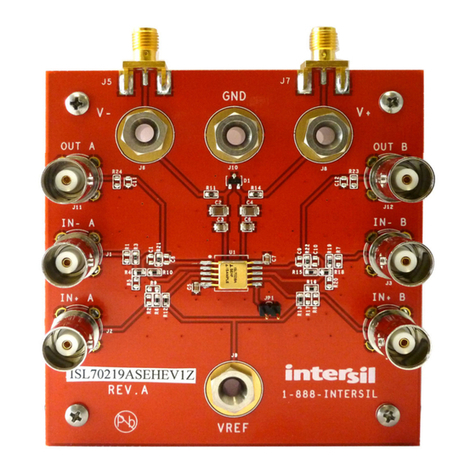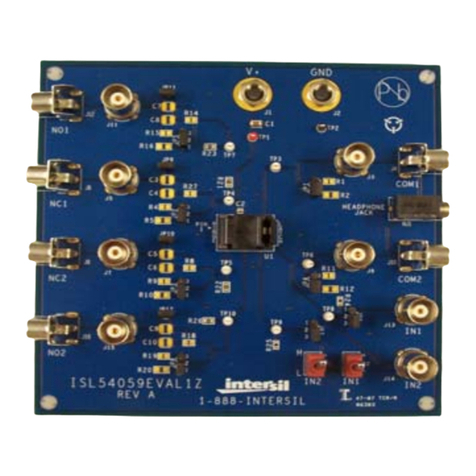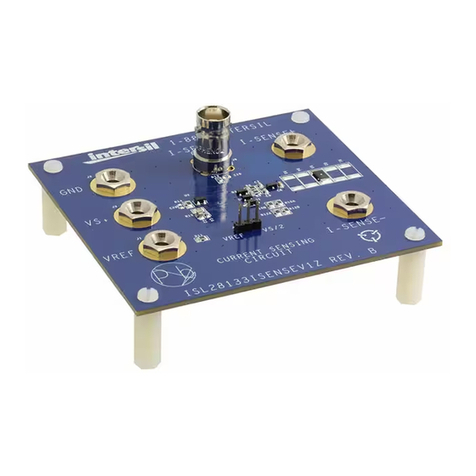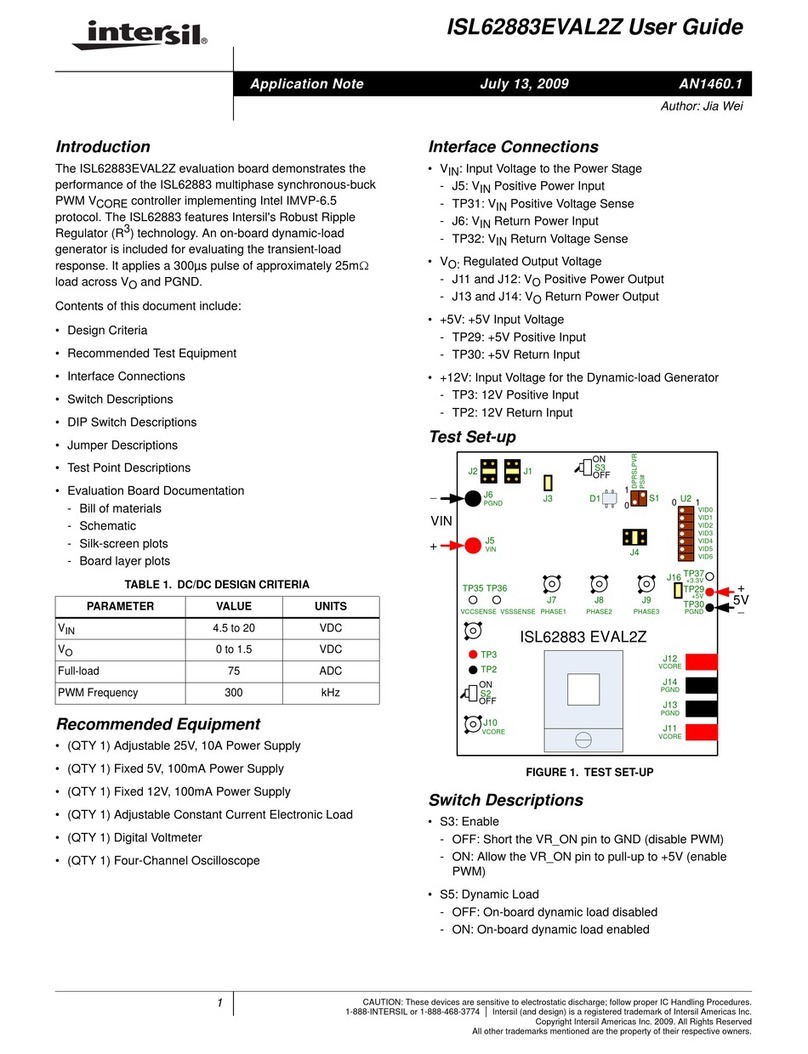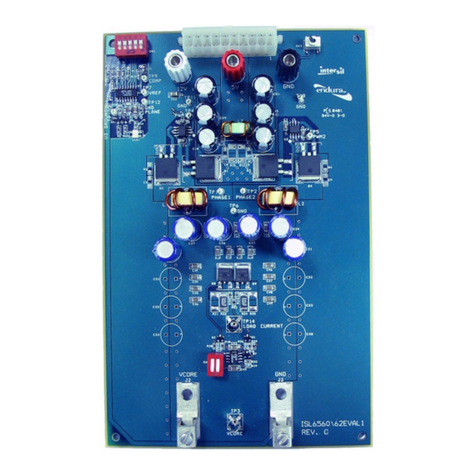
R34UZ0015EU0102 Rev.1.02 Page 6
Feb 7, 2024
ISLVERSALDEMO2Z Demonstration Board Manual
The VCC PSFP, VCC SOC I/O, VCC PMC and VCC PSLP rails can be adjusted for 0.8V or 0.88V. See Tab l e 5 .
1.4 Output Voltage Monitor Test Points and Load Transient Generators
The ISLVERSALDEMO2Z provides test points for monitoring the output voltage and terminals to apply an external
load current. Certain output rails also provide an onboard transient load generator for a step load. Table 6
summarizes output rail monitoring, test points, and load transient generator input control for the supply rails.
The transient load generator comprises a FET driver controlling a common source NFET that pulls a load resistor
to GND to provide a transient load to the supply rail. The ISL73847_VCCINT 0.8V core rail uses an
ISL71040MRTZ GaN FET driver, while all other load generators use the HIP2211FBZ half-bridge driver. In both
cases, a 0V-5V logic control signal is used to switch the transient load where 0V turns the load off, and 5V turns
the load on. Figure 3 through Figure 8 show the input connection to the transient load generator control. The load
comprises multiple parallel 2W-rated, 2512-sized resistors. The transient load generator is intended for pulse load
operation only where the frequency and duty cycle of the load do not exceed the power dissipation of the
resistors.
Table 5. VCC PSFP, VCC SOC I/O, VCC PMC and VCC PSLP Rail Adjustments
VOUT Jumper Status VCC PSFP VCC SOC I/O VCC PMC VCC PSLP
0.8V Jumper Open
JP452 JP1002 JP551 JP351
0.88V Jumper Short
Table 6. Output Rail Test Points and Transient Load Control Input Connection
ISLVERSALDEMO2Z Node
Name
Oscilloscope Test Point
(2pin jumper)
DC Test Point/External Load
Access (VOUT/GND)
Transient Load
Generator Control
ISL73847_5V0_SYS TP701
ISL70003A_3V3_SYS TP501 P501/P502
ISL73007_VCCO_50x TP1051 P1051/P1052
ISL73007_VCCO_XPIO TP1101 P1101/P1102 JP1104
ISL73007_VCC_PSFP TP451 P451/P452 JP453
ISL70001A_VCC_SOC/IO TP1001 P1001/P1002 JP1003
ISL73006_VCC_PMC TP551 P551/P552
ISL73006_VCC_PSLP TP351 P351/P352
ISL73847_VCCINT TP1 TERM1/TERM2 TP22
ISL70001A_VCCAUX TP901 P901/P902 JP902
ISL73006_VCCAUX_SMON/PMC TP951 P951/P952
ISL73007_GTY_AVCC TP251 P251/P252
ISL73006_GTY_AVCCAUX TP401 P401/P402
ISL73007_GTY_AVTT TP201 P201/P202 JP201
ISL73005_DDR_VDD TP801 P801/P802
ISL73005_DDR_VTT TP802 P803/P804
ISL73006_DDR_VPP TP851 P851/P852

